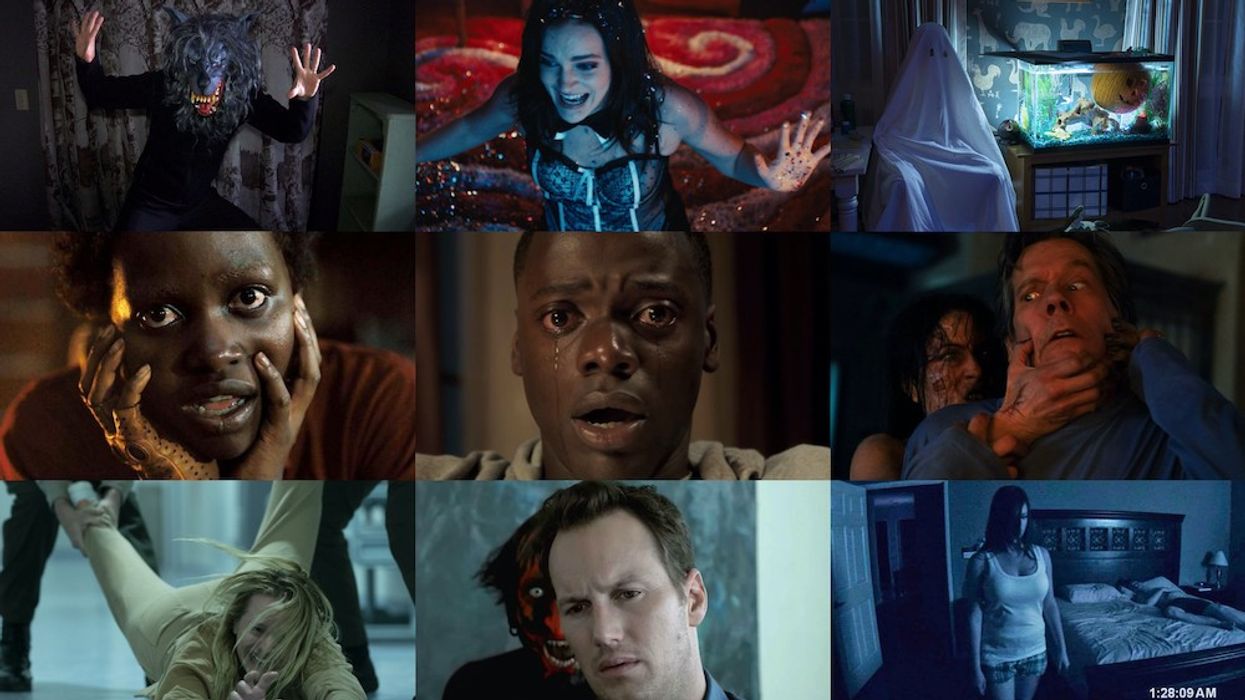Learn What Blumhouse Gets Right About Horror Filmmaking
If you want to make horror, you might dream of becoming the next Jason Blum. This could get you a step closer!

Jason Blum is the powerhouse producer behind Blumhouse Productions, which has been churning out horror hits since the mid-2000s. Found-footage supernatural thriller Paranormal Activity put them on the map, and they've been on a roll ever since, releasing both fun, freaky horror fare (Insidious) and award-winning films containing social commentary (Get Out).
But by and large, these are mostly low-budget films that are able to recoup costs easily. How do they do it?
Wisecrack put together a recent video analyzing Blumhouse's methods. Check out the video below, then read on for more insights!
(Content warning: horror imagery and horror violence.)
How to keep horror cheap
The simple answer? Stay home.
Single-location shoots are excellent budgetary controls for many reasons. Location scouts are done quickly once you have your main set. The amount of transpo needed for the project is dramatically reduced. You don't have to worry about all those pesky permits. Hopefully, you get the location for several consecutive days, reducing set-up/tear-down time.
You end up with movies that feel very closed-in and scary, as well as more affordable. All you have to do is stick Ethan Hawke in a new house with a bunch of creepy Super 8 films. Boom, you've got Sinister.
But there's more to it than that.

What does a single location actually mean?
On a deeper, more thematic level, trapping a family at home also challenges a convention often found in horror. Home is usually seen as a safe haven and a refuge from slashers and spirits. (Barring home invasions and hauntings, of course.)
Larger-scale films like the original Texas Chainsaw Massacre find teens fleeing a killer on the road, while The Shining stays with a family as they get snowed in at a huge hotel. While both of these movies spend a lot of time in particular locations, those locations are not "home" to the main characters. Most characters are trying to escape these places to get back home, to safety.
Movies like Paranormal Activity show that homes aren't always safe. As the video points out, this alternate take on horror could reflect the U.S. audience's growing uncertainty during the economic crash and housing crisis. Domesticity was no longer secure for audiences or characters.
In The Invisible Man, Elisabeth Moss' character is living in what seems like a perfect, seaside palace. But it's actually a prison where her abusive partner keeps her under his control, and she has to flee. Get Out and Us tackle racism and the dark underbelly of suburbia.
The video also examines The Purge as it relates to gated communities. Again, a real-life trend toward neighborhoods walling themselves in to avoid "outsiders" and crime is subverted in a movie set within a wealthy, gated home, which is invaded by violent killers.

What's the lesson?
One thing that's always been so fascinating and compelling about horror is its ability to reflect what's going on in the world. Really good horror films connect with audiences on a level deeper than what jump scares can facilitate.
By putting characters at home and making the setting work for different stories in different ways at different times, Blumhouse not only manages to save money but also turn our homes into places of uncertainty and terror.
What's next? Dig into more horror locations!
Here's how one filmmaker shot a horror film in ten nights. We can also teach you how to make your location a character in your project! No budget? We've got horror tips for you, too!
Source: Wisecrack

 Richard Gere and Uma Thurman in 'Oh, Canada' via Kino Lorber
Richard Gere and Uma Thurman in 'Oh, Canada' via Kino Lorber  Uma Thurman in 'Oh, Canada'via Kino Lorber
Uma Thurman in 'Oh, Canada'via Kino Lorber 









